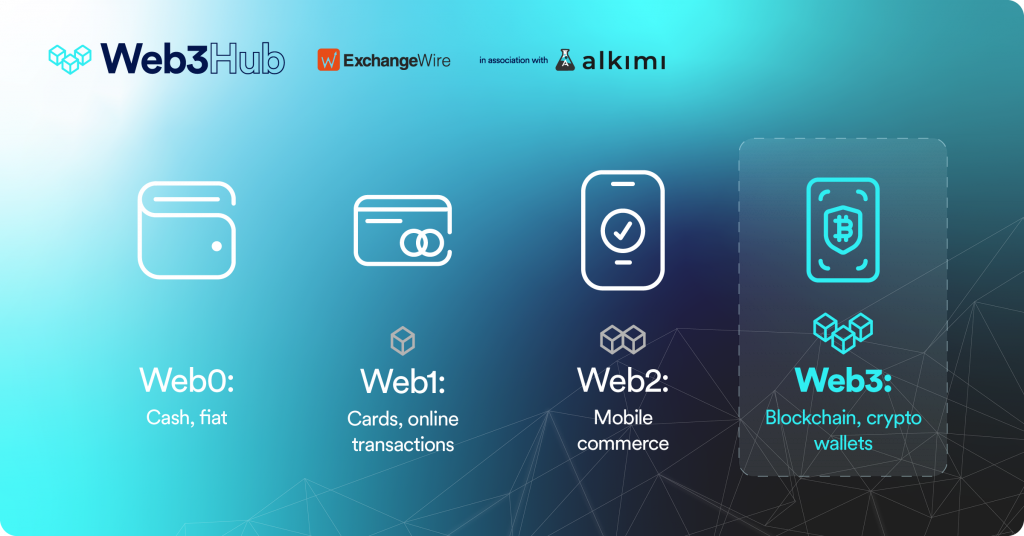How Will Web3 Change Advertising?
by on 30th Mar 2023 in News

With the advent of new technologies and enhanced user experience, users have become more connected than ever before. Georges Tertois of Eidgensi looks at how Web3 can enhance this shift even further, and what it will offer to advertisers.
Nowadays, virtually all brands use digital advertising. Attracting customers online has become highly competitive, and the number of digital ads that an internet user sees has risen exponentially.
The rise of ad blockers and ad-blocking browsers has made it more difficult for digital advertisers to reach their intended audience, and as a result, digital advertisers have to evolve.
Effective digital advertising walks a fine line. Gone are the days of just putting up banners or sponsored posts on websites. Instead, brands need to pivot and adopt more user-friendly practices that don’t feel invasive.
Web3 brings about a whole new set of opportunities for brands looking to advertise their products and services in a way that benefits both users and advertisers in the long run.
So how will Web3 change advertising and impact how brands communicate with their audience?
Web3 Will Refresh How Brands Communicate
In Web2, users have very little control over their data. Companies collect data, making it difficult to reject cookies (which is illegal) and profit off of sharing your data. The user has little say over who it is shared with or for what purpose, essentially becoming a product of the company.
This has caused a rise in tension between users and companies. As a result, users have begun making it harder for brands to use their data and understand who they’re reaching with their advertising campaigns.
The knock-on effect of this is that internet users are now bombarded with ads, many of which are meant for a different audience as users try to block, conceal and protect themselves.
In Web3, brands will be able to target their desired audience more easily by tracking their wallet activity. A brand can identify what someone is interacting with by their transactions on the blockchain and use that information to advertise to relevant users and deliver better personalised digital marketing.

A brand doesn’t know the identity of the wallet owner because their real identity is protected by encryption. But brands are able to track wallet activity in order to identify potential customers and target those wallets with ads that they think are relevant.
In practice, effective Web3 advertising from a Web2 brand may look something like this: A user buys a pair of shoes using money from their Web3 wallet, the brand now knows that the user has new shoes, they can identify their purchase and can track their wallet, perhaps they would be interested in the matching socks too.
The Web3 model is better for both users and brands, users identities are protected, they receive relevant ads and brands are able to reach their intended target.
Web3 = Better Customer Engagement
In Web3, a specific brand’s user-base becomes more of a community. Strong communities are formed in Web3 because, unlike other iterations of the internet, the users now own the network.
Web3 marketing strategies have proven effective at engaging and aligning users, Web3 brands such as Bored Ape Yacht Club (BAYC) have risen rapidly to become highly distinguished and recognisable brands with their novel marketing strategies. Being given a role as a Discord chat moderator for these brands is a highly esteemed position and hundreds or even thousands compete for it.
Most native Web3 brands have their own token, and their users (community) can buy these tokens if they want to. A brand's token will have some utility and users are incentivised to hold the token for this reason, like holding a company's stock but with additional perks.
Imagine how loyal you would be to the Apple brand or products if every time you bought an iPhone they gave you one share. Naturally, you’d want that share to go up in value as it directly benefits you. It’s plausible to assume that many people would stick solely to Apple products as a result of this, receiving more shares and further aligning themselves with the company's future success.
By issuing tokens to their communities Web3 brands engage users, align them with their brand, and build trust.
Another way that Web3 brands have captured their audience's attention and strengthened brand loyalty is through the use of NFTs. Many large brands such as Adidas, Starbucks and Gucci have begun using NFTs for precisely those reasons.
NFTs are a new and innovative way to help brands engage with their customers. In Web3, a brand deciding to do an NFT launch could be the best marketing decision they ever made.
The Future of Advertising
Web3 brings innovative new strategies to make consumers feel valued and trust the brands they are engaging with. Brands have a massive opportunity to identify with their audience and communicate with them more effectively. If done well, a brand's customer base's loyalty could be exponentially increased using Web3 advertising strategies, including NFTs and token offerings, as well as other community incentives.






